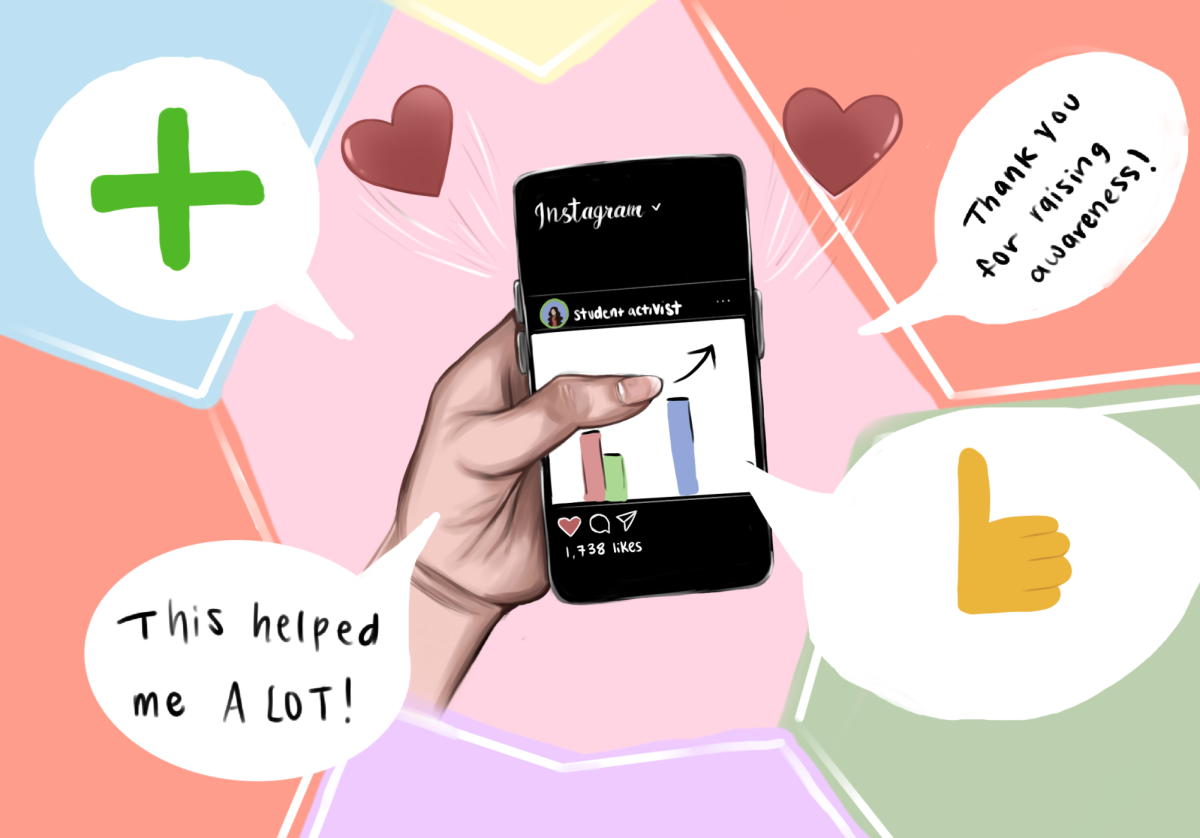College students who grew up in the 2010s, here’s a trip down memory lane: you’re standing in your front yard, plugging your nose, squinting and getting drenched by friends or siblings with a bucket of ice-cold water. If you were on Instagram or Facebook back then, chances are you got tagged in the #IceBucketChallenge at least once.
What we tend to forget is that the famous #IceBucketChallenge was actually a campaign started by activists to raise research funds for the disease amyotrophic lateral sclerosis (ALS). The campaign was wildly successful, collecting $115 million in donations from challenge participants. Without social media, this rapid movement to fight ALS might have been impossible.
Social media has made activism more accessible than ever, from removing geographical constraints to allowing organizers to reach larger audiences. While information distribution was once limited to career journalists and social elites, anyone can now inform themselves or others with relative ease. Despite concerns surrounding misinformation and virtue signaling, the digital plane remains essential to modern activism.
Young adults must learn to use social media as activists.
Social media primarily impacts activism by facilitating the rapid spread of information. With around 91% of Americans engaged on social media, online platforms like Instagram, Facebook and YouTube are vital forums for mass mobilization. They allow students to amplify causes like environmental activism and racial justice with just the click of a button.
“There is no doubt that without social media, the Black Lives Matter movement, for example, or the #MeToo movement, wouldn’t have gotten as widespread attention as they did because people used social media to spread information about them using hashtags,” said Gina Masullo, associate director of the Center for Media Engagement and professor in the School of Journalism and Media.
Simple hashtags that began with a post, comment or share have brought significant attention to social injustice in the United States.
“I don’t see myself as a seasoned social media activist, (but) I do consider myself to be using my platform always to fight for what I believe is important,” journalism junior Hasina Shah said.
Yet, the speed and reach that make social media such an effective tool for activism can also perpetuate misinformation and performative content.
“Those same aspects of social media can make it dangerous because you feel connected to people, and then when people are awful, or uncivil or hateful, it affects you,” Masullo said. “Social media is a great way to get information really quickly to a lot of people. That’s also what makes it really good at spreading misinformation.”
However, these risks should not deter young people from using social media for activism. Research shows that Gen Z and younger generations can better identify false information online compared to our parents — a product of growing up in the digital age.
“Take the information you find and just pop it into Google,” Massulo said. “That, I think, is something younger people instinctively do.”
By diligently checking and discerning their sources, students can preserve platforms as productive spaces for social progress.
“I prioritize people from marginalized identities when I am looking for information about issues that concern marginalized groups,” Shah said. “For example, during the uprisings in 2020, I was prioritizing following educators who are Black, who were already in the sphere of education, and who were actively doing work to liberate Black Americans.”
Over the past 20 years, social media has allowed grassroots movements to gain traction in mainstream media, uplifting historically silenced voices.
“I have been prioritizing solidarity journalism … listening to people who are on the ground, closest to the harm, because that is always where the truth is going to lie,” Shah said.
Navigating social media activism also requires an understanding of authenticity. Individuals or companies will sometimes share activist content simply to prove their moral correctness or appeal to particular audiences. However, as consumers become increasingly aware of this performative media presence, we can learn to more easily identify the problem.
“If activism only stays on social media, it’s probably not going to change anything,” Masullo said. “Social media can be a conduit to real life. I think that will be amplified in the future … as technology increases, the potential for using technology to amplify voices will only increase.”
Beyond viral trends, social media serves as a catalyst for real change. While challenges like misinformation and performative content persist, young people armed with digital literacy hold the potential to harness social media as a positive force. Paired with a commitment to authentic activism, social media’s accessibility strengthens marginalized communities and promotes equality of information.
Jackson is a Plan II and journalism sophomore from Boerne, Texas.















